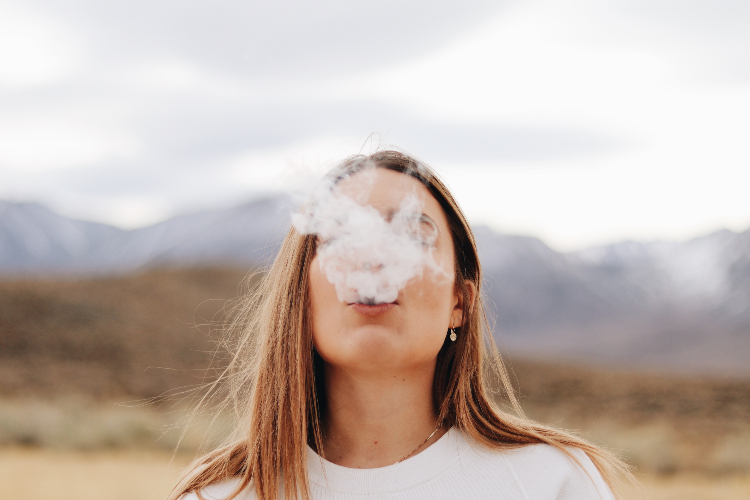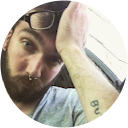Parents play a significant role in their children’s lives, especially when they are growing up. When children mature into pre-teens and teenagers, parents tend to worry about their encounters with drugs and alcohol. According to the CDC, alcohol, marijuana and tobacco are substances most commonly used by adolescents. Additionally, around two-thirds of 12th graders in the United States have tried alcohol, which is no wonder why parents tend to worry.
Moms and dads can help their kids by talking to their pediatrician about screening for substance use if they aren’t comfortable doing it themselves. In this reference, we will go over warning signs of teen drug abuse, and the difference between drug dependence and addiction. In addition with where teens hide drugs, and when addiction treatment may be necessary. Here in San Diego, Healthy Life Recovery offers substance abuse treatment for teens who are suffering from addiction.
Teenage Drug Abuse, Dependence, and Addiction
It is important for individuals to become educated on the difference between drug abuse, dependence, and addiction. It is common for teens to experiment with drugs and not become addicted. Still, when teens abuse drugs, they are at higher risk of developing an addiction when they are adults. By learning and understanding the differences, you can determine the level of care your teen may need.
What is Drug Abuse?
The act of using alcohol or drugs in a way that results in problems is drug abuse. For example, the effects of drugs cause relationship or behavioral issues, school troubles, and mental or physical illness.
When it comes to teenagers, any drug or alcohol use is considered drug abuse. This is because these substances interfere with normal brain development. Teen drinking and drug use can increase the risk of cognitive, behavioral, or emotional problems in the future.
What is Drug Dependence?
Dependence is defined when an individual stops using drugs or alcohol, and withdrawal symptoms follow. When there is heavy drug or alcohol abuse, the brain changes the functions of neurotransmitters. They try to compensate for the chemical changes caused by the abuse.
Drug dependence creates tolerance, meaning that larger doses are required to feel the same effects of the substance. Eventually, the brain may adapt so that it operates more easily when the substance is present. Subsequently, when the teen stops taking drugs, withdrawal symptoms can follow, ranging from mild to severe.
What is Addiction?
Addiction can be identified as compulsive drug or alcohol abuse, regardless of the consequences and side effects of drugs. Individuals struggling with addiction may find it hard to quit on their own, even if they want to, or have tried before.
Addiction causes changes in thought and behavior patterns since it changes the structure of the brain. It almost always has an underlying cause, such as chronic stress, a history of trauma, or mental illness.
If your teenager has a drug or alcohol addiction, there are treatment centers available to help. Teenage substance abuse prevention consists of setting a good example and having conversations about drug use. Family members who recognize and prevent drug use can prevent emerging problems before they begin.

Signs of Teen Drug Abuse
There are numerous signs of drug use among teens. However, it can become tough to tell the difference between drug use and teenage growing pains. As a parent, it is crucial to be proactive and have conversations with your child to see what is going on. Signs that your teen may be using drugs or alcohol include:
Physical Signs of Drug Use
- Dilated pupils, stumbling, slurring, or bloodshot eyes
- Poor hygiene or diminished personal appearance
- The smell of liquor or marijuana on your teen
- Missing medications or alcohol
- The presence of drug paraphernalia, such as a pipe, empty pill bottle, or a vaping pen
Behavioral Changes and Patterns
- Uncontrollable laughter
- Bad grades or a declining performance in school
- A loss of interest in activities your teen once enjoyed
- A change in your teen’s friend group
- Avoiding eye contact
- Frequent hunger or “munchies”
- Secretive behavior
- Missing curfew
- Changes in appetite or sleep patterns
- Frequent mood swings
Where Could My Teen Hide Drugs?
If you believe your teen is using drugs or alcohol, don’t be nervous about searching around for evidence. It can feel like an invasion of privacy, but most importantly, it could save their life. It is the parent’s job to start a conversation if they see red flags and suspect substance use. One in five parents that believe their teen is using drugs does not impose to prevent further drug use.
If you are worried that your teen may be hiding illicit drugs, there are universal tricks and spots for hiding substance use. Teenagers addicted to drugs often use them in their family’s home. This occurrence is so common the Drug Enforcement Agency (DEA) has included information where parents should look in their home.
Hiding places Teen drug abuse may include:
- Alarm clocks
- Shoes
- Candy wrappers
- Cars (interior, steering wheel and trunk)
- Game consoles
Parents should be more informed of where to look for drugs, and ways to support their teen’s needs if they are battling addiction. Some additional places teens frequently hide drugs are listed below.
Room Decor
Many different drugs can be hidden in room decor, with some being easier to hide than others. For instance, hiding LSD can be as easy as stashing it behind a poster or picture frame on the wall. One could try wrapping it in a way it resembles a sugar cube or breath mint.
Stash cans are designed to resemble an everyday item in your child’s room. A Mountain Dew can you might have thought was garbage, could be a hiding place for substances. Possible stash cans could be anything from shaving cans, to Axe body spray, to soda cans.
Private Bathroom
Teens and adolescents who have their own bathroom can store drugs in air vents and under toilet lids. Beauty and hygiene items that can be hollowed out can also conceal substances. Items such as lipsticks, lip glosses, and feminine hygiene items are just a few common hiding places for teen drug abuse.

Common Drugs that Teens Abuse
The drugs most common in teen drug abuse are similar to those of adults. The reasons for abuse differ, where teens use substances based on the accessibility. They are also more likely to take larger amounts of drugs and alcohol because of how they comprehend the risks and dangers. Common drugs include:
Alcohol
The most common substance abused by teens is alcohol. Due to the social acceptance among people of legal drinking age, this can lead teens to view alcohol as comparatively harmless.
Research-based evidence suggests that teens are more likely to binge drink due to their impulsive control that hasn’t fully developed in the brain. Binge drinking can increase the risk of developing an addiction for people of all ages, especially a brain that isn’t fully developed. Discussing these risks with your teen can reduce the chances of underage drinking.
Marijuana
Typically, people who use marijuana habitually started using in their adolescence. Most people do not think smoking weed occasionally does not cause any harm. According to the Health & Human Services (HHS), marijuana among adolescents has increased in the past 10 years. More than 20 percent of high school seniors smoke this substance.
Prescriptions and Over-the-counter Medications
Most teens realize that prescription drugs can have dangerous effects on the body. Nonetheless, teenagers seem to enjoy narcotic painkillers such as OxyContin and benzodiazepines like Xanax that produce pleasurable effects. These drugs are highly addictive and have a high risk of overdosing. Almost 40 percent of teens who abuse prescription medication, acquired it from their parents’ medicine cabinet.
It is common for teens to abuse over-the-counter medications as well. Cough medicines such as dextromethorphan (DXM) is found in many cold and flu medicines. This substance can cause intoxicating effects and possibly lethal effects in high doses.
Addiction Treatment for Teens
If you suspect or see signs of teen drug abuse, you need to educate yourself, talk to your teen, and possibly seek help. A great, trustworthy resource for information is The National Institute on Drug Abuse. According to the NIDA, in order to overcome addiction, almost always professional help is required.
Many times, teens have a hard time dealing with sad or stressful situations. It could be understood why they think having some alcohol or marijuana can offer some sort of relief. Though, the best way to deal with stress is to seek emotional support or to find a support group.
If your child has already tried to quit substance abuse and has failed, addiction treatment is vital. Healthy Life Recovery can heal your teenager’s drug problem and help them remain sober. We offer additional educational support to teens in recovery here at our San Diego rehab center. The earlier a substance use disorder is recognized, it becomes simpler to treat. Get help as soon as possible by giving us a call today.
Call Now
We're Here To Help!
Location
4747 Mission Blvd, Suite #6
San Diego, CA 92109






